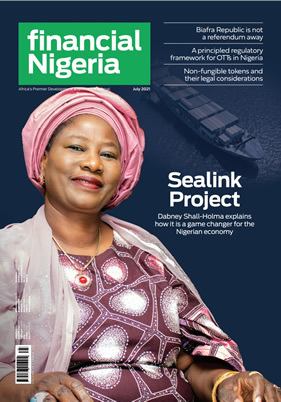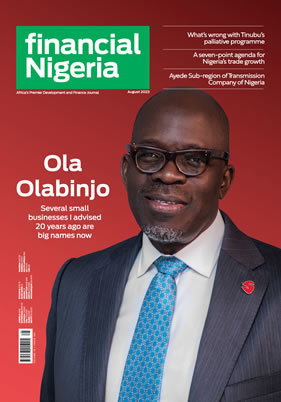
Mojisola Karigidi, Founder and Product Developer, Moepelorse Bio Resources
Follow Mojisola Karigidi
![]() @OjebodeMojisola
@OjebodeMojisola
Subjects of Interest
- Food Security
- Governance
- Health
- Sustainable Development
AI solutions for improved poultry and fish production 20 Oct 2025
The poultry industry accounts for over 40 per cent of global meat protein while fish contribute approximately 15 per cent of animal-source protein, which is equivalent to about 6 per cent of all protein, according to the Food and Agriculture Organisation of the United Nations (FAO). In 2022, approximately 62 million people were employed in fishing and aquaculture globally. Asia accounted for up to 85 per cent of the workforce in the industry while Africa accounted for only 10 per cent.
The poultry industry employs tens of millions of people globally. Asia has the highest number of labour contribution in the sector with millions of people economically dependent on the poultry industry. Most of this is concentrated in family businesses and small rural farms. Regardless, the United States is the world’s largest poultry meat producer, followed by China and Brazil.
In Africa, the poultry sector generates income for many people, especially in rural areas, and contributes to food and nutrition security across the continent, but mostly in small and medium scale. Large scale poultry production on the continent is still growing. However, the demand for poultry products (meat and eggs) and fish is expected to increase over the next decade in middle-income countries due to rising incomes and urbanisation, according to recent reports by FAO and the Organisation for Economic Co-operation and Development (OECD). This points to the need to increase outputs for these protein sources to meet local demand.
Poultry and fish farming happen in different environments. Nevertheless, they share several common challenges that have contributed to soaring prices of poultry meat, eggs, and fish in different parts of the world. The greater effect is in the developing world where purchasing power is still low.
Poultry and fish farmers in the developing world need to embrace technological advances and access to tools that could help overcome some of the challenges to the sectoral productivity. This is where non-biological innovation, such as Artificial Intelligence (AI), comes in. AI and other technology based tools are already in use in Africa while some are still being developed to address many of the shared challenges of poultry and fish farming.
One major challenge for both poultry and fish production industries is the high cost of feeds. Feeds account for up to 70 per cent of production costs in both sectors. Over-dependence on imported feed ingredients, such as soybean meal, maize, and fish meal, makes them expensive and vulnerable to currency fluctuations. Although local alternatives are usually available, they may have lower nutritional quality or require expertise to produce them correctly. Therefore, optimising feed efficiency is one major way to ensure cost-effective production. This will also support the health and growth of birds and fingerlings.
A number of AI-powered farm management software and Internet of Things (IoT) feeder devices have been developed and are currently available to help poultry and fish farmers optimise feeding to reduce waste, monitor feed consumption, and make for more precise feeding. An example of such AI tool is FeedOptima. This AI-assisted platform for real-time nutrient monitoring and feed performance optimisation uses sensors and data tools to directly address high feed cost and feeding inefficiencies to benefit both poultry and fish farmers.
In Africa, there is FishBox Africa (Kenya), a software that helps to reduce human error and waste in feed ingredients compilation. Another example is Aquarech (Kenya), an application that works with medium-scale fish farmers, helping to source quality feeds, provide market linkages, and deliver precision feeding and an integrated value chain approach to address both feed and market access challenges.
In Nigeria, AquaTrack is a digital farm management platform that tracks pond conditions and feeding schedules. It utilises WhatsApp for data input. This platform is very good for small and medium scale farmers who prefer messaging tools to full web tools for feed optimisation.
Another prominent joint challenge for poultry and fish production is disease and bio-security risks. Infectious diseases, from disease causing agents such as viruses, bacteria and parasites, are the most frequently reported causes of poultry losses. Newcastle disease, avian influenza, infectious bursal disease, fowl cholera, salmonellosis, and coccidiosis are some of the common poultry diseases in Africa.
Similarly, fish farmers also suffer great losses from fish diseases. Bacterial, viral, fungal and parasitic infections can reduce fish growth and production. In addition, these agents can increase feeding cost when fishes lack appetite, resulting to feed waste, and susceptibility to low water quality that may finally result in death. Common aquaculture diseases include white spot epidemic, infectious salmon anemia, and fin and tail rot.
Some of the bio-security measures that poultry farmers can adopt to prevent disease outbreaks include regular cleaning of poultry pen, disinfecting the pen before introducing new stock, isolation of infected birds, and general improvement of bird welfare through proper feeding and vaccination. In fish production, biosecurity also involves taking measures to prevent diseases from occurring and spreading by protecting fish farms from external contamination. Poultry and fish production sectors also struggle with limited access to affordable veterinary or fish health services and vaccines.
Some AI tools have been developed to prevent and tackle the challenge of infections and diseases in poultry and aquaculture. For example, in Nigeria, there is Vetwiz 2.0. This is a smartphone-based AI platform created by Farm Innovation Nigeria where poultry farmers as well as livestock farmers can upload photographs of animals to spot symptoms, monitor health, and prevent disease outbreak. Farmers can also get timely advice on treatment, consult licensed professionals and even locate nearby animal clinics.
Other AI platforms for disease prevention are Smart Poultry, a platform that uses visual and audio analyses to monitor weight, behaviour, and detect diseases early. It is, however, more suited for large farms that can afford sensors and cameras. Phytobiotics-Chicken Checker is a phone application that analyses chicken faeces through photos to detect possible disease outbreaks and provide real-time health monitoring of birds.
For fish farms, AI-powered disease prevention tools are often designed to monitor water parameters as many disease outbreaks in this case can be associated with the water environment. For example, Aqsen Innovations’ Aquasense, trailed in Uganda and the United Kingdom, monitors water quality in real time, checking temperature, dissolved oxygen, pH, salinity, and chemical presence. This software alerts users when conditions become risky, allowing early intervention to prevent stress and diseases.
Other solutions are Tropo Farms + Bioceanor (Ghana), Dominion Solutions (South Africa), Liquid Intelligent Technologies (Kenya) and Aquarech (East Africa and across the globe).
Other joint challenges of the poultry and fish industries include poor access to quality inputs, limited technical knowledge and extension services, water and environmental management, climate change, and weather variability. AI technology can provide a helping hand to support farmers in these areas.
However, there are a number of limitations and deployment challenges that may affect the use of AI technology in the developing world. It may be difficult to penetrate areas with low connectivity and where farmers do not have smartphones that can take quality photos. High cost of sensors and cameras may be a barrier for smallholder farmers. Insufficient data may also hinder deployment in some regions.
To fully take advantage of the benefits of AI tools for poultry and fish farming to boost productivity, there is a need to create awareness and educate farmers on how to use these tools to support their operations. It is also very important for governments, especially at the state and local levels, to provide infrastructure that supports the use of AI technology in remote farming communities.
Mojisola Karigidi, PhD, a Financial Nigeria Columnist, is a Nigerian biochemist and the founder and product developer at Moepelorse Bio Resources. She is also a Global Innovation Through Science and Technology (GIST) awardee, and an Aspen New Voices fellow.
Latest Blogs By Mojisola Karigidi
- AI solutions for improved poultry and fish production
- AI solutions for improved crop production
- Threats and mitigation strategies against plastic waste in agriculture
- Implementation strategy crucial for the success of 12-4 education policy
- TELA Maize and addressing the concerns over GM foods



